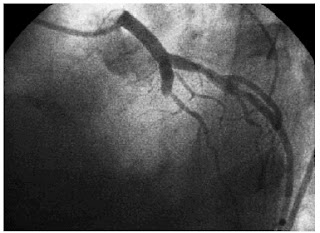Anatomic coronary artery disease can be detected in more than 50% of people older than 70 years of age.
There are differences in prevalence by gender:
at 65 years of age, CAD is more prevalent in men than in women;
by age 80, the prevalence of symptomatic congestive heart disease is nearly equivalent in men and women.
at 65 years of age, CAD is more prevalent in men than in women;
by age 80, the prevalence of symptomatic congestive heart disease is nearly equivalent in men and women.
Despite the high prevalence of anatomic CAD, only 10–20% of people older than 65 years of age carry a diagnosis of active CAD.
One study reported that 37% of elderly patients had subclinical CAD, making it as common as clinically overt CAD in older adults. Furthermore, in this study,
the presence of subclinical CAD was significant as it strongly predicted overt CAD, stroke, and mortality, even after adjustment for traditional cardiovascular risk factors.
the presence of subclinical CAD was significant as it strongly predicted overt CAD, stroke, and mortality, even after adjustment for traditional cardiovascular risk factors.

Comments
Post a Comment